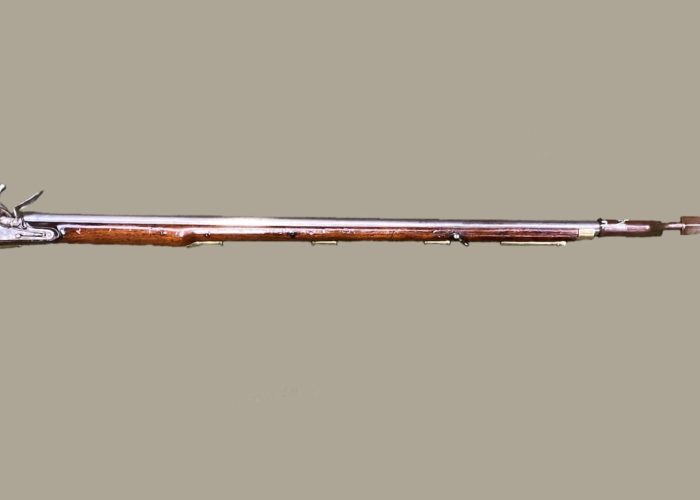Musket: ‘Brown Bess’
Theme: French revolution, French revolutionary and Napoleonic wars (1792-1815), War and the international order
This musket, commonly known as the ‘Brown Bess’, was the standard weapon used by British infantrymen between 1722 and 1838. It was the most common weapon that the British Army used in its 20 years of war against Revolutionary and Napoleonic France.
Although it could fire up to 1,100 metres, the Brown Bess was not very accurate. This was because the ball had to be quite loose for ease of loading. It would be very hard to hit another soldier by deliberately aiming at them at ranges greater than 100m. This inherent lack off accuracy was compensated for by having a large number of soldiers fire their muskets at the same time at very short range (sometimes less than 25m).
A trained British soldier was expected to fire three shots a minute. When the musket was empty, a soldier then relied on the bayonet, which had a sharp blade about 44cm long. British bayonet charges against enemy troops were known as ‘giving them Brummagen’ (Brummagen was a slang name for Birmingham where many bayonets were made) and were greatly feared.
Did you know..?
When the bayonet was fixed, this musket would have been taller than most Age of Revolution soldiers.
Sources & acknowledgements
This object description and its related educational resources were researched and written by our team of historians and education specialists. For further information see the item’s home museum, gallery or archive, listed above.
-
Curatorial info
- Originating Museum: The Museum of the Royal Welsh, Brecon
- Production Date: 18th Century
-
Use this image
Some rights reserved
Credit line: “From the collection of The Regimental Museum of The Royal Welsh, Brecon” to appear in close proximity to the reproduced image.
The Regimental Museum of The Royal Welsh reserves copyright on all its photographic material. Schools may be permitted to use the image as a resource and must retain the credit line. Permission must be sought if the appearance of the image is to be altered in any way. Any other use must have prior approval.
- Rights Holder: The Museum of the Royal Welsh, Brecon
- License Type:
Some rights reserved



